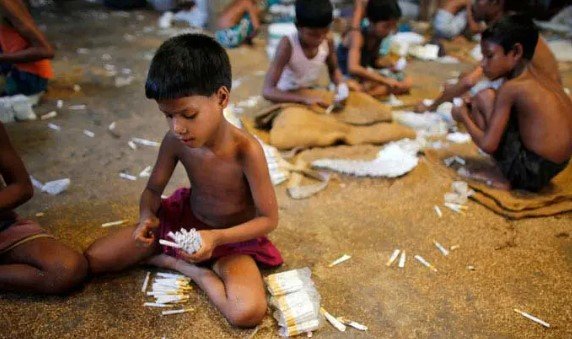As the world grapples with a staggering 272 million children out of school, India faces its own daunting education crisis, with 1.17 million children identified as Out-of-School Children (OoSC) for the 2024-25 academic year, according to the Union Ministry of Education.
The #UNESCOGlobalEducationMonitoringReport 2024–25 underscores a global stagnation in reducing out-of-school numbers, with a mere 1% decline over the past decade, driven by chronic underinvestment and regional disparities. In India, these global trends resonate deeply, with states like Uttar Pradesh, Jharkhand, and Assam reporting the highest OoSC figures, highlighting systemic challenges in achieving universal education by 2025.In a written response to a query from Telugu Desam Party MP, Sribharat Mathukumilli in the Lok Sabha, Union Minister of State for Education Jayant Chaudhary revealed that Uttar Pradesh leads with 784,228 OoSC, followed by Jharkhand (65,070) and Assam (63,848). The ministry defines OoSC as children aged 6–14 who have never enrolled in school or have dropped out after 45 days of unnotified absence.

This figure, tracked via the ‘Prabandh’ portal, reflects India’s struggle to meet Sustainable Development Goal 4 (SDG 4) for inclusive and quality education, with a national shortfall of 75 million against 2025 targets, as per UNESCO. Telangana too faces similar challenges. A 2025 report notes that 70% of #Telangana’s schools are government-run, yet they educate only 38% of students, with 61% attending private schools. This shift suggests retention issues in public schools, likely contributing to OoSC numbers, particularly in rural areas outside Hyderabad.
The state’s implementation of the #NationalEducationPolicy (NEP) 2020 aims for universal foundational literacy by 2025, but infrastructure gaps and socio-economic barriers hinder progress. Hyderabad, an educational hub, fares better with higher enrollment due to urban infrastructure, but disparities in slum areas persist, mirroring national issues of learning poverty, where 73% of children in developing countries, including India, cannot read simple text by age 10. Globally, #UNESCO highlights that 33% of school-aged children in low-income countries are out of school, compared to 3% in high-income nations, with sub-Saharan Africa hosting over half the global total. Chronic underinvestment is a key driver, with low- and middle-income countries spending just $55 per learner compared to $8,543 in high-income countries.
India’s education spending, at 0.37% of GDP in 2024-25, falls short of the recommended 6%, exacerbating access and quality gaps. UNESCO advocates innovative financing, like debt-for-education swaps, to address this, a strategy India could explore to bolster its education system. To align with NEP 2020 and SDG 4, India, particularly Telangana, must enhance public school infrastructure, train teachers, and target interventions in marginalized areas like Hyderabad’s slums. Community involvement and better data collection via UDISEPlus can help track progress.
As UNESCO Director-General #AudreyAzoulay emphasizes, “Education is the key driver of prosperous, inclusive societies.” Without urgent action, quality education risks remaining a privilege, leaving millions behind in India and beyond.


